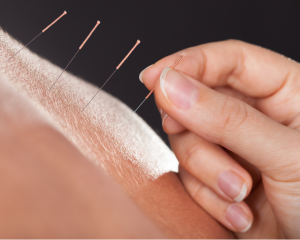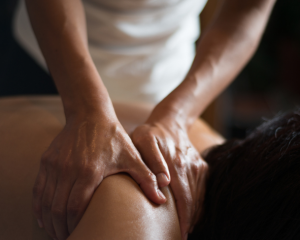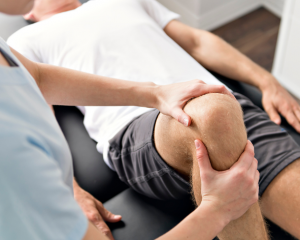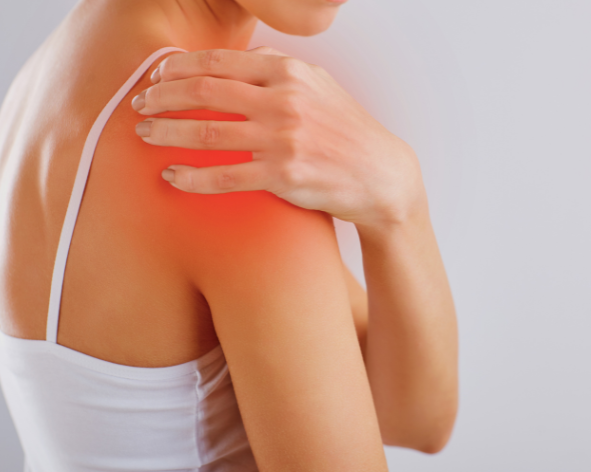What is Acute Pain?
Acute pain is your body’s alarm system—a sharp, sudden signal that something is wrong. But beyond this familiar description lies an intricate biological dance:
- Nerve Signal Overload: When tissue is damaged, your nerves fire rapidly to alert the brain, leading to that sharp, unmistakable sensation.
- Inflammatory Cascade: Damaged cells release chemicals that trigger swelling and redness, intensifying the pain.
- Protective Reflexes: Your body may stiffen or restrict movement in the affected area, which, while protective, can lead to secondary issues like muscle tension or stiffness.
The hidden reality? Acute pain isn’t just a physical phenomenon; it’s also influenced by stress, poor posture, and even your emotional state.
How to Avoid Acute Pain
While common advice like staying active and eating well is invaluable, there are often-overlooked methods to sidestep acute pain:
- Practice Proper Posture
Proper posture is one of the simplest yet most effective ways to prevent acute pain. Slouching while sitting, hunching over your phone, or standing with uneven weight distribution can strain your muscles, joints, and spine. To avoid this, focus on maintaining a neutral spine position—your ears, shoulders, and hips should align whether you’re sitting or standing. For desk workers, adjust your chair and monitor height to ensure you’re not craning your neck or leaning forward. Proper posture not only reduces the risk of pain but also improves breathing, circulation, and overall body mechanics.
- Incorporate Gentle Movements
Movement is medicine for the body, but not all movement needs to be intense to be effective. Incorporating stretching into your daily routine can help you maintain flexibility and balance while improving your body awareness. Simple daily practices, such as shoulder rolls, hip openers, or neck stretches, can alleviate tension before it escalates into acute pain.
- Strengthen Key Muscle Groups
Building strength in targeted muscle groups is crucial for preventing pain, particularly in areas that support your body’s weight, like your core, back, and legs. Strong muscles provide stability for your joints, reducing the risk of injuries during physical activity or routine tasks like lifting heavy objects. Focus on low-impact exercises such as planks, bridges, and resistance training that engage both large and small stabilizing muscles. Regular strength training not only enhances your physical resilience but also improves your posture and mobility, creating a buffer against unexpected strains or sprains.
- Relax and Manage Stress
Stress is an often-overlooked contributor to acute pain. Chronic tension caused by mental or emotional stress can manifest physically, leading to tight muscles, headaches, and a heightened sensitivity to pain. Incorporating stress-management techniques into your routine can prevent this. Practices such as deep breathing, progressive muscle relaxation, meditation, or even taking short breaks during the day to stretch and unwind can work wonders. Maintaining a consistent sleep schedule and staying hydrated also play key roles in keeping your body’s systems functioning optimally. By managing stress effectively, you enhance your body’s ability to cope with minor strains or injuries, preventing them from escalating into acute pain.
What We Can Help with Acute Pain
- Acupuncture: Beyond the Needles

Acupuncture isn’t just about inserting needles; it’s a sophisticated method that interacts with your body’s nervous system and energy pathways to promote healing. Research indicates that acupuncture alters brain pathways related to pain perception, retraining your brain to experience less pain. Beyond pain relief, it also can boost your immune response, accelerating the healing process for injuries like sprains or muscle tears and supporting your body’s natural ability to recover and restore balance.
- Massage Therapy: Beyond Relaxation

Massage therapy isn’t just a feel-good treatment; it’s great for pain relief that works on multiple levels. Deep tissue massage targets adhesions and scar tissue, releasing trapped nerves and chronic tension that you might not even realize are causing discomfort. At the same time, massage activates the lymphatic system, helping to clear toxins and waste products from injured tissues, which accelerates recovery and supports your body’s natural healing processes.
- Physiotherapy: Not Just Exercise

Physiotherapy isn’t just about exercises and stretches. It can identify “silent injuries,” underlying problems you may not yet feel but that could lead to complications if left untreated. Additionally, physiotherapy also focuses on strengthening smaller stabilizing muscles that are often overlooked in regular workouts, creating a protective shield against future injuries while enhancing overall movement and functionality.
Why do You Choose Happipuncture?
At Happipuncture Clinic, we combine different methods synergistically to amplify each other’s benefits, creating a comprehensive approach to pain relief and recovery. We are renowned for holistic approach to healthcare.
Recover faster with personalized care at Happipuncture Clinic. Schedule your appointment today by calling us at 09-2182992.




